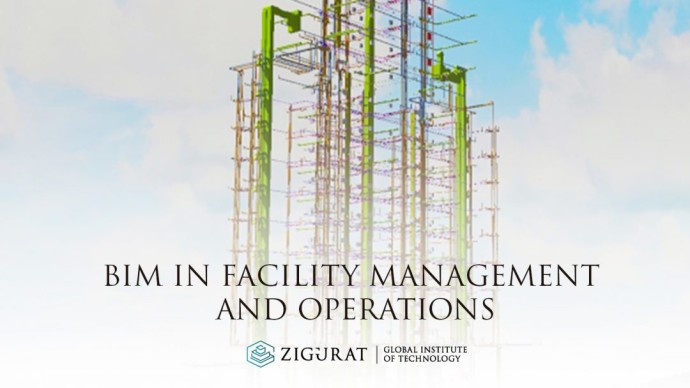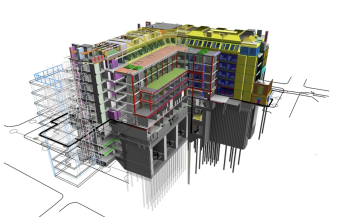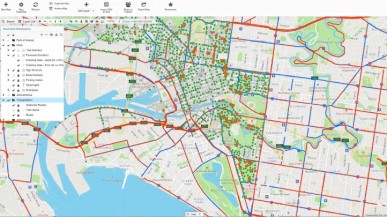Zigurat Global Institute of Technology
Blog / BIM & Construction Management
BIM services: BIM in facility management and operations
Categories

- 2D/3D: Digital Modeling
- 4D: Measurements, Scheduling and Planning
- 5D: Cost estimation, Budgets and Quantity Takeoffs
- 6D: Energy Analysis, Efficiency Studies, and Sustainability
- 7D: Facility Management and Operations
As we have all heard, BIM is changing the way in which buildings are designed and built, but it is important to emphasize that this methodology also affects how these buildings are managed and maintained.
Patrick MacLeamy (chairman and former CEO of HOK) explains that for every dollar we invest in the design of a project, we will have a cost proportional to $20 during the construction phase of the building and a cost of $60 over the project’s lifetime based on maintenance and use.
In other words, the operational lifetime of a building is estimated to be the most expensive period of the building’s entire life cycle. It is for this same reason that public administration is keen to implement BIM in facility management systems in all of their existing assets and new construction projects, in order to have more control of the information and documentation generated from its properties and infrastructure. 
It is estimated that in less than 10 years, this information will be coordinated and linked with the Big Data of a city (public infrastructure, facilities, etc.), making “Smart Cities” a possibility by reaching a level of super-efficiency only possible with digital control over all infrastructure and buildings within a city.
In our Global BIM Management Master's program, we teach you how a construction project designed with BIM software allows the user to integrate all of the useful information of the building from the design phase, and to have all of the most important information on hand and organized, from which the facility managers or owners can:
- Manage their real estate portfolio/properties
- Manage projects
- Manage facility maintenance (FM)
- Manage environmental and financial impacts
- Manage documentation
- Manage facilities in multiple locations
- Access the information of the property in a simple way
- Search and view real-time reports, plans, drawings and archived documents
- Share data with clients, suppliers and partners
- Manage transfers
Join the most comprehensive BIM Management program in the world and learn how to apply BIM in Facility Management and Operations!
https://www.youtube.com/watch?v=yk7goMMVmlUThe video shown above is an example of a cloud-based application solution for BIM in Facility Management. Having the opportunity to link BIM architecture software with an application for Facility Management gives us the following advantages:
- Create real-time bi-directional links between the BIM model and FM applications in the cloud
- Connect data in the design, construction, management and maintenance phases of the building
- Manage rooms and spaces
- Synchronize the contained properties (families) of the BIM model with FM teams
- Create maintenance plans for operations teams
- Perform tracking on scheduled activities and warranty requirements
- Publish views of the BIM model to the FM application allowing anyone in the project team to visualize and manage the information model
ABOUT THE AUTHOR
Justin Aungst is an architect and his current focus is on assisting professionals to develop the skills that are necessary for the global advancement of BIM methodology. He was drawn to BIM because of its possibilities for international collaborative teamwork, and he believes that collaboration is the key to any successful project.




